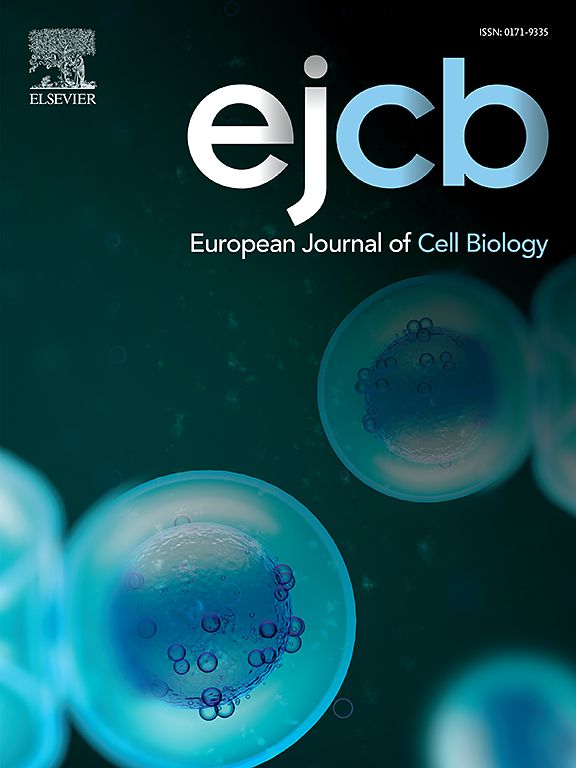Myosins 1e/f at the podosome base regulate podosome dynamics and promote macrophage migration
IF 4.3
3区 生物学
Q2 CELL BIOLOGY
引用次数: 0
Abstract
Cells of the monocyte lineage form specialized membrane-associated, actin-rich structures, called podosomes. Podosomes play important roles in cell adhesion and migration as well as the proteolytic degradation of the extracellular matrix. While podosomes are always closely associated with the plasma membrane, the structural components linking the podosome core, composed of branched actin, to the membrane are not fully understood. In this study we show that class I myosins, Myo1e and Myo1f, localize to a specific region of podosomes, underneath the podosome core and near the ventral plasma membrane, and that this localization is mainly mediated by the Myo1e/f TH2 domains. Respective knockdowns or knockouts of Myo1e/f lead to increased podosome size, altered turnover and lateral mobility, which is likely due to Myo1e/f regulating the attachment of core actin filaments to the plasma membrane. In addition, Myo1e/f double knockout macrophages were characterized by a reduction in 3D and 2D migration, even though these cells exhibited increased ability to degrade the extracellular matrix. Along with the other membrane-associated podosome components, such as the transmembrane protein MT-MMP and the GPI-anchored DNase X, Myo1e and Myo1f mark the membrane-proximal region of podosomes. We propose to label this region as the podosome “base”, an additional substructure joining the current trifecta of the podosome cap, core, and ring.
肌凝蛋白1e/f调节足体动力学,促进巨噬细胞迁移
单核细胞谱系的细胞形成专门的膜相关的,富含肌动蛋白的结构,称为足小体。足小体在细胞粘附和迁移以及细胞外基质的蛋白水解降解中起重要作用。虽然足小体一直与质膜密切相关,但连接足小体核心(由分支肌动蛋白组成)与膜的结构成分尚不完全清楚。在这项研究中,我们发现I类肌球蛋白Myo1e和Myo1f定位于足小体的特定区域,在足小体核心下方和靠近腹侧质膜,并且这种定位主要是由Myo1e/f TH2结构域介导的。分别敲低或敲除Myo1e/f可导致足小体大小增加、周转和横向移动改变,这可能是由于Myo1e/f调节核心肌动蛋白丝与质膜的附着。此外,Myo1e/f双敲除巨噬细胞的特征是3D和2D迁移减少,尽管这些细胞降解细胞外基质的能力增强。Myo1e和Myo1f与其他膜相关的足小体成分(如跨膜蛋白MT-MMP和gpi锚定的DNase X)一起标记足小体的膜近端区域。我们建议将这个区域标记为足体“基”,这是一个附加的亚结构,连接了目前的足体帽、核和环三联体。
本文章由计算机程序翻译,如有差异,请以英文原文为准。
求助全文
约1分钟内获得全文
求助全文
来源期刊

European journal of cell biology
生物-细胞生物学
CiteScore
7.30
自引率
1.50%
发文量
80
审稿时长
38 days
期刊介绍:
The European Journal of Cell Biology, a journal of experimental cell investigation, publishes reviews, original articles and short communications on the structure, function and macromolecular organization of cells and cell components. Contributions focusing on cellular dynamics, motility and differentiation, particularly if related to cellular biochemistry, molecular biology, immunology, neurobiology, and developmental biology are encouraged. Manuscripts describing significant technical advances are also welcome. In addition, papers dealing with biomedical issues of general interest to cell biologists will be published. Contributions addressing cell biological problems in prokaryotes and plants are also welcome.
 求助内容:
求助内容: 应助结果提醒方式:
应助结果提醒方式:


